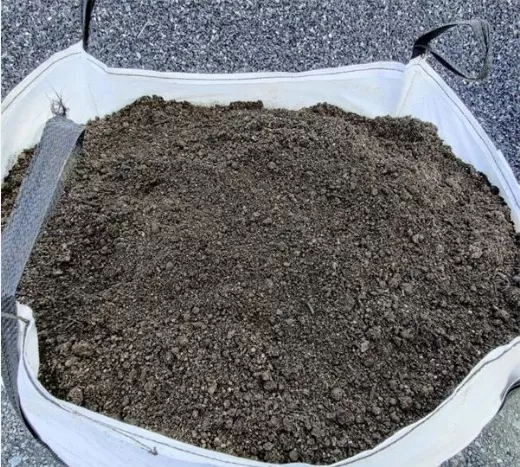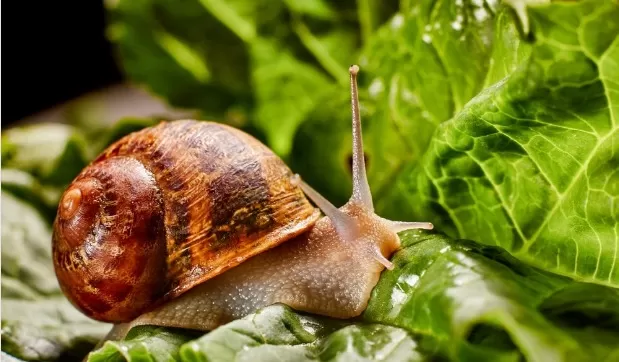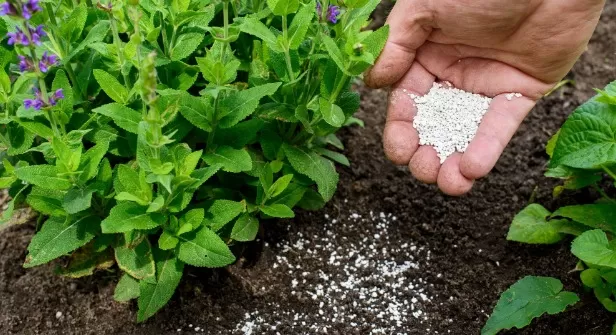Don’t discard your used coffee grounds just yet! Discover the smart and Creative Ways to repurpose them. From gardening to cleaning, explore the various practical uses for coffee grounds beyond your morning cup. Get inspired and make the most out of this versatile resource.
Boost Your Garden’s Growth: Utilize Coffee Grounds as Fertilizer

Coffee grounds have proven to be a valuable resource for gardeners looking to enhance the growth and vitality of their plants.
Packed with essential nutrients like calcium, potassium, nitrogen, and phosphorus, coffee grounds serve as an excellent natural fertilizer. In particular, their acidic nature makes them ideal for acid-loving plants such as azaleas and rosebushes.
Discover how you can harness the power of coffee grounds to fertilize and nourish your garden.
Coffee grounds as a nutrient-rich fertilizer:.
Calcium: Coffee grounds contain calcium, which helps promote healthy cell development and growth in plants.
Potassium: Potassium is essential for overall plant health, strengthening roots, improving disease resistance, and enhancing flower and fruit production. Nitrogen: Coffee grounds are a source of nitrogen, a crucial element for leaf and stem development, as well as vibrant green foliage.
Phosphorus: Phosphorus stimulates root growth, aids in energy transfer, and contributes to the development of flowers, fruits, and seeds. Using coffee grounds as fertilizer:.
Preparation: Collect used coffee grounds from your daily brewing routine or ask local coffee shops for their leftover grounds.
Composting: Coffee grounds can be added to your compost pile, enriching the compost with valuable nutrients. Direct application: Sprinkle coffee grounds directly around acid-loving plants such as azaleas, rosebushes, rhododendrons, and hydrangeas.
Avoid placing coffee grounds too close to the plant stems to prevent moisture retention and potential rot. Mulching: Mix coffee grounds with organic mulch and spread it around your garden beds to provide a slow-release source of nutrients.
Worm composting: Coffee grounds can also be added to worm composting systems, enriching the worm castings that can then be used as a nutrient-rich soil amendment. Precautions and additional considerations:.
Avoid excessive use: While coffee grounds offer numerous benefits, moderation is key.
Use them in moderation to prevent over-acidification of the soil, which may adversely affect certain plants. Balance with other organic matter: Incorporate coffee grounds into a well-balanced organic gardening routine that includes other compost materials, such as kitchen scraps, grass clippings, and leaves.
Consider pH requirements: While coffee grounds are acidic, not all plants thrive in acidic soil. Test your soil’s pH levels and ensure that the plants you are fertilizing prefer an acidic environment.
Decomposition time: Coffee grounds break down slowly, providing a steady release of nutrients over time. Be patient and allow them to decompose naturally.
Alternative uses for coffee grounds:.
Pest control: Coffee grounds can act as a natural deterrent for slugs, snails, and certain insects.
Sprinkle them around susceptible plants to help repel unwanted pests. Soil structure improvement: Incorporating coffee grounds into heavy clay soils can help improve drainage and promote a looser, more crumbly soil structure.
By harnessing the nutrient-rich properties of coffee grounds, you can naturally fertilize your garden, nourishing your plants and promoting healthy growth. Embrace this eco-friendly approach to gardening and witness the benefits of using coffee grounds as a sustainable fertilizer in your own backyard.
Renew Your Furniture: Coffee Grounds for Hiding Scratches in Dark Wood
Coffee grounds, known for their versatility, can also serve as a handy solution for concealing scratches on dark wood furniture.
This surprising trick can help restore the beauty of your furniture and give it a renewed appearance. Discover how coffee grounds can be used to effectively hide scratches and blemishes on dark wood surfaces.
The effectiveness of coffee grounds:.
Pigmentation: Coffee grounds possess a natural pigment that can help darken the scratched area and make it blend more seamlessly with the surrounding wood.
Temporary solution: It’s important to note that using coffee grounds is a temporary fix and may not completely repair the scratch. However, it can significantly minimize its appearance and provide a quick solution for minor blemishes.
Steps to conceal scratches using coffee grounds:.
Preparation: Gather used coffee grounds and ensure they are dry.
Dark roast coffee grounds tend to work best for matching the color of dark wood. Cleaning: Clean the scratched area thoroughly to remove any dust or debris.
Use a soft, dry cloth or a mild wood cleaner if necessary. Applying the coffee grounds: Dip a cotton swab or a small brush into the coffee grounds and gently rub them into the scratch.
Apply the grounds evenly, covering the entire scratched surface. Letting it sit: Allow the coffee grounds to sit on the scratch for approximately 5 to 10 minutes.
This gives the pigmentation time to interact with the wood. Cleaning off the excess: After the designated time, use a dry cloth to wipe away the excess coffee grounds.
Gently buff the area to ensure a smooth finish. Assessing the results: Evaluate the repaired area and repeat the process if necessary.
Keep in mind that this method may work better on shallow scratches or surface imperfections. Additional considerations:.
Testing in an inconspicuous area: Before applying coffee grounds to a visible part of the furniture, test the method on a small, inconspicuous area to ensure it produces the desired results and does not cause any discoloration or damage.
Compatibility with the wood: Coffee grounds are most effective on dark wood surfaces. For lighter or different types of wood, alternative methods may be more suitable for hiding scratches.
Long-term solutions: While coffee grounds can provide a temporary fix, it’s essential to consider more permanent solutions for deeper or more severe scratches. Consult a professional furniture restorer or explore appropriate wood repair products for a lasting restoration.
Embrace the charm of imperfections:.
Minor scratches and blemishes can add character and history to your furniture.
Instead of aiming for a flawless surface, consider embracing these imperfections as part of the furniture’s unique story. Remember, while coffee grounds can help diminish the appearance of scratches on dark wood furniture, it is advisable to seek professional assistance for significant damage or when dealing with valuable or antique pieces.
Enjoy the process of fixing up your furniture and appreciating its renewed beauty with the help of coffee grounds.
Protect Your Garden: Use Coffee Grounds to Deter Snails

Snails can be a persistent nuisance in gardens, causing damage to plants and flowers.
However, there’s a surprising solution that can help deter these slimy invaders: coffee grounds. Rich in caffeine, coffee grounds can act as a natural repellent for snails, keeping them away from your precious plants.
Discover how to utilize coffee grounds effectively and protect your garden from snail infestations.
The snail-repelling power of caffeine:.
Caffeine’s effect on snails: Snails are highly sensitive to caffeine, and it can have a detrimental impact on their behavior and survival.
High doses of caffeine can even be lethal to these gastropods. Benefits of coffee grounds: Coffee grounds contain caffeine, making them an accessible and natural deterrent for snails in the garden.
By utilizing this organic approach, you can help safeguard your plants from snail damage without relying on chemical pesticides. Applying coffee grounds to deter snails:.
Identifying affected areas: Determine the specific areas in your garden where snails are causing damage or where they are likely to congregate, such as flower beds, vegetable patches, or other vulnerable plantings.
Preparation and application: Collect used coffee grounds from your daily coffee routine. Ensure that the coffee grounds are dry before use, as damp grounds may clump together.
Sprinkling the coffee grounds: Sprinkle a generous amount of coffee grounds around the base of the affected plants, creating a barrier. Concentrate on areas where snails are frequently observed or where plants are particularly vulnerable.
Replenishing the coffee grounds: Periodically replenish the coffee grounds, especially after rainfall or when they have been displaced by garden maintenance activities. This ensures a consistent presence of caffeine to discourage snails.
Considerations and additional tips:.
Testing and observation: Before applying coffee grounds extensively, test their effectiveness in a small area to ensure they don’t negatively impact your plants.
Observe the snail activity and adjust the amount of coffee grounds as needed. Alternative options: Besides coffee grounds, tea leaves have also been reported to deter snails due to their caffeine content.
Experiment with both coffee grounds and tea leaves to find the most effective solution for your garden. Organic gardening practices: Incorporating organic gardening methods, such as maintaining a balanced ecosystem, reducing excess moisture, and practicing regular garden maintenance, can complement the use of coffee grounds in deterring snails.
Companion planting: Consider planting snail-resistant or snail-repellent plants alongside your vulnerable ones. Some plants, such as lavender, rosemary, and certain herbs, are known to repel snails naturally.
Remember, while coffee grounds can be an effective deterrent, they may not completely eliminate snails from your garden. Monitoring and combining various snail control methods can help create a more robust defense against these pests.
Enjoy a snail-free garden and thriving plants with the help of coffee grounds as a natural snail repellent.
Freshen Up Your Fridge: Deodorize with Coffee Grounds
A refrigerator or freezer can sometimes develop unpleasant odors due to various food items and ingredients.
However, you don’t need to rely on commercial deodorizers or endure lingering chemical scents. Instead, harness the power of coffee grounds to naturally deodorize your fridge and enjoy a refreshing atmosphere. Discover how to effectively use coffee grounds to eliminate odors and add a delightful aroma to your refrigerator.
Absorbing and neutralizing odors with coffee grounds:.
Coffee grounds as odor absorbers: Coffee grounds have the ability to absorb and neutralize foul odors, making them an excellent natural deodorizer for your fridge.
Simple application: Place a bowl filled with dry coffee grounds in the back of your refrigerator or freezer. Allow it to sit undisturbed for several hours or overnight.
Odor removal process: As the coffee grounds sit, they absorb and eliminate the unpleasant smells, leaving your fridge smelling fresher and more inviting. Enhancing the deodorizing effect:.
Infusing a pleasant scent: If you prefer a different scent or want to mask the coffee aroma, you can add a few drops of vanilla or cinnamon extract to the coffee grounds.
This will create a customized and inviting fragrance inside your refrigerator. Mixing coffee grounds with extracts: Simply mix the coffee grounds with a small amount of vanilla or cinnamon extract before placing the bowl in your fridge.
Adjust the amount of extract to achieve your desired scent strength. Replenishing and refreshing: Over time, the coffee grounds will lose their deodorizing effectiveness.
Replace the bowl of coffee grounds every few weeks or as needed to ensure continuous odor control. Additional tips for maintaining a fresh refrigerator:.
Regular cleaning routine: Maintain a clean fridge by regularly removing expired or spoiled food, wiping spills, and sanitizing surfaces.
Proper food storage: Store foods in airtight containers to prevent odors from spreading and causing unpleasant smells. baking soda companion: Place an open box of baking soda in addition to the coffee grounds to further absorb odors and keep your refrigerator smelling fresh.
Ventilation and temperature control: Ensure proper air circulation and maintain appropriate temperature settings in your fridge to minimize odor buildup. By using coffee grounds as a natural deodorizer, you can eliminate unpleasant odors and enjoy a fresh-smelling refrigerator without relying on artificial scents or chemicals.
Give your fridge a refreshing makeover with the power of coffee grounds, and customize the aroma to your liking with extracts like vanilla or cinnamon.
Boost Your Compost: Enhance with Coffee Grounds

If you’re looking to supercharge your compost and create nutrient-rich soil for your garden, coffee grounds can be a valuable addition to your composting routine.
These grounds offer a source of nitrogen that is essential for the composting process and attract beneficial earthworms, further aiding in decomposition. Learn how to effectively incorporate coffee grounds into your backyard compost heap to enrich the quality of your compost.
The benefits of coffee grounds in compost:.
Nitrogen-rich content: Coffee grounds are a fantastic source of nitrogen, an essential nutrient for the breakdown of organic matter in the composting process.
Attracting earthworms: Coffee grounds are known to attract earthworms, which play a vital role in composting by enhancing aeration and breaking down organic materials. Promoting decomposition: The addition of coffee grounds accelerates the decomposition process, leading to faster compost production.
Proper usage and balance:.
Adding coffee grounds to compost: As you build your compost pile, sprinkle coffee grounds throughout the layers.
Aim for an even distribution to ensure proper incorporation. Balancing nitrogen and carbon: It’s important to balance the nitrogen-rich coffee grounds with carbon-rich materials such as leaves, straw, or shredded paper.
This creates a favorable carbon-to-nitrogen ratio for efficient decomposition. Layering technique: Alternate layers of coffee grounds with other compostable materials to maintain the right balance.
Aim for roughly equal amounts of nitrogen-rich materials (like coffee grounds) and carbon-rich materials. Additional tips for successful composting:.
Stirring and turning: Regularly stir or turn your compost pile to provide oxygen and promote even decomposition.
Moisture control: Ensure that your compost heap remains moist but not overly saturated. Add water if needed to maintain the ideal moisture level.
Patience and time: Composting is a natural process that requires time. Be patient and allow the materials to decompose fully before using the finished compost in your garden.
Coffee grounds considerations:.
Avoid excess: While coffee grounds are beneficial, it’s important not to overload your compost with them.
Aim for a balanced mixture of various organic materials to create a diverse and nutrient-rich compost. Avoid oily or flavored coffee grounds: Stick to plain, unflavored coffee grounds without additives or oils, as these may affect the decomposition process or introduce unwanted substances to your compost.
By incorporating coffee grounds into your compost pile, you can enhance its nutrient content, speed up decomposition, and attract beneficial earthworms. Remember to maintain a balance between nitrogen-rich materials like coffee grounds and carbon-rich materials to ensure successful composting.
Enjoy the rewards of nutrient-rich compost that will nourish your garden plants and promote healthy growth.
*The information is for reference only.